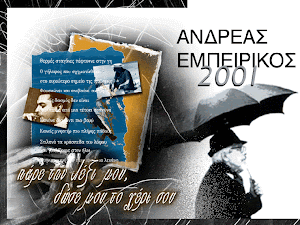Nazi Propaganda
By Professor David Welch
Last updated 2011-02-17
Sower of peace
Much of Hitler's popularity after coming to power rested on his achievements in foreign policy. A recurring theme in Nazi propaganda before 1939 was that Hitler was a man of peace, but one who was determined to recover German territories 'lost' as a result of the Versailles Treaty of 1919, drawn up at the end of World War One.
In 1936, when Germany re-occupied the Rhineland in contravention of Versailles, Hitler attempted to placate the Allies by speciously offering to conclude non-aggression treaties with France and Belgium, and to return Germany to the League of Nations.

The cartoon above is from the right-wing magazine
Kladderadatsch. It dates from after Germany's illegal occupation of the Rhineland, but presents Hitler as a statesmanlike sower of peace. The figure of Peace is shown in the background, blowing a trumpet fanfare.
Since the mid-nineteenth century, the German periodic press had embraced a robust tradition of political satire. It is not surprising, therefore, that the Nazis seized upon the cartoon as an important propaganda vehicle.
Jews
By the late 1930s, the increasingly fanatical tone of Nazi propaganda reflected the growing radicalisation of the regime's anti-Semitic policies. The Jewish stereotypes shown in such propaganda served to reinforce anxieties about modern developments in political and economic life, without bothering to question the reality of the Jewish role in German society.
In November 1937 'The Eternal Jew' exhibition opened in Munich, and ran until 31 January 1938, claiming to show the 'typical outward features' of Jews and to demonstrate their allegedly Middle Eastern and Asiatic characteristics. The exhibition also attempted to 'expose' a world-wide 'Jewish-Bolshevik' conspiracy.

The striking poster for the exhibition contrasted Jewish individualism and 'self-seeking' with the Nazi ideal of a 'people's community'. It did this by revealing an 'eastern' Jew - wearing a kaftan, and holding gold coins in one hand and a whip in the other. Under his arm is a map of the world, with the imprint of the hammer and sickle.
The exhibition attracted 412,300 visitors, over 5,000 per day. The Secret Police reports claimed that it helped to promote a sharp rise in anti-Semitic feelings, and in some cases violence against the Jewish community.
Anti-Bolshevism
After the failure to invade Britain in 1940, with Göring's Luftwaffe decisively checked in the Battle of Britain, Hitler switched his attack and invaded the Soviet Union on 22 June 1941.

The anti-Bolshevik motif was central to the Nazi
Weltanschauung('world view'). The movement had created an environment in which Communists, together with Jews, formed the main target of Nazi propaganda and violence. Russia figured not only as the centre of world Communism, but also as the repository of international Jewry.
The anti-Bolshevik poster above proclaims that Germany has destroyed Great Britain (depicted as one graveyard, with Churchill's grave symbolically prominent), and shows how the mailed fist of Germany is turning its attention to the east - threatening a knock-out blow for Stalin and the Soviet Union. The justification in the poster for the invasion of the USSR (in violation of the Nazi-Soviet non-aggression pact, 1939) is security (baby in a cradle) and prosperity (living space for Germans).
 Nazi Euthanasia Propaganda Poster.
Text reads:
Nazi Euthanasia Propaganda Poster.
Text reads:
60000 RM (Reichsmark) kostet dieser Erbkranke die Volksgemeinschaft auf Lebenszeit
Volksgenosse das ist auch Dein Geld
Lesen Sie Neues Volk
Die Monatshefte des Rassenpolitischen Amtes der NSDAP
English translation:
60000 RM
this is what this person suffering from hereditary defects costs the Community of Germans during his lifetime
Fellow Citizen, that is your money, too
Read '[A] New People'
The monthly magazines of the Office for Race Politics of the NSDAP









































Δεν υπάρχουν σχόλια:
Δημοσίευση σχολίου